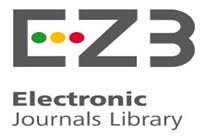Archive
Volume 1, Issue 2
International Journal of Science and Engineering Applications (IJSEA)
Volume 1, Issue 2 - December 2012
Characterization of dielectric properties of the enamel filled with carbon nanotubes for the frequency range of 50 Hz - 5 MHz
Abstract:
It has been observed that the addition of nano fillers to the enamel can greatly improve the dielectric properties of the enamel. Carbon nanotubes have been tested as nano filler. Chemical vapour deposition method was used to synthesize carbon nanotubes. Scanning electron microscope has been used to augment the particle size of carbon nanotubes. These carbon nanotubes were mixed with standard (Elmo Luft 1A-FD) enamel with help of ultrasonic vibrator. The basic dielectric properties such as dielectric loss tangent (tan), dielectric constant(), quality factor, phase angle, dielectric conductivity and dielectric power loss of the enamel filled with carbon nanotubes were analyzed and compared with the properties of the standard enamel. These different dielectric properties were found with the help of the Dielectric Spectroscopy. Dielectric constant, dielectric losses, dielectric conductivity and heat generated under AC fields were analyzed for the frequency range of 50 Hz to 5 MHz. At 50 Hz, the enamel filled with 1 wt% of carbon nanotubes has lower dissipation factor and dielectric losses. At 5 MHz, the enamel filled with 3 wt% of carbon nanotubes has lower dissipation factor and dielectric losses.
Keywords: carbon nanotubes, dielectric constant, dielectric losses, dielectric conductivity, quality factor, dielectric loss tangent, dielectric power loss.
References:
[1] Dieter Kind and Hermann Kamer, “High voltage insulation technology” 1985.
[2]Jipeng Cheng, et al, (2006) “Carbon nanotube synthesis and parametric study using CaCO3 nanocrystals as catalyst support by CVD” Materials Chemistry and Physics 95, pp 5–11.
[3] M S Naidu and V Kamaraju, “High voltage engineering” Solid dielectrics used in practice pp 106 – 122.
[4] Nguyen. N. Q, et al, “Investigations on dielectric properties of enameled wires with nanofilled varnish for rotating machines fed by inverters”, IEEE 2009.
[5] Santanu Singha and Joy Thomas, “Permittivity and tan delta characteristics of epoxy nanocomposites in the frequency range of 1 MHz – 1 GHz”, IEEE 2008.
[6] Edison Selvaraj. D, Pugazhendhi Sugumaran. C and SivaPrakash. A, “Characterization of Electrical and Thermal Properties of Enamel Filled with Carbon Nanotubes”, PEIE 2012, LNEE, pp. 496-502, 2012











